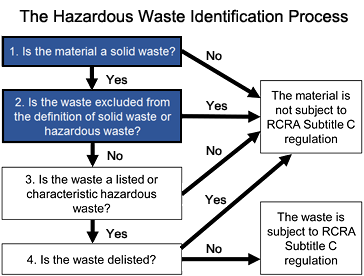Not known Factual Statements About Reclaim Waste
Not known Factual Statements About Reclaim Waste
Blog Article
The 6-Minute Rule for Reclaim Waste
Table of Contents3 Simple Techniques For Reclaim WasteReclaim Waste Fundamentals ExplainedThe 10-Second Trick For Reclaim WasteThe Best Guide To Reclaim WasteThe Basic Principles Of Reclaim Waste Not known Details About Reclaim Waste

Never put harmful compounds down sinks, toilets or stormwater drains Compounds consisting of fuel, oil, oil, pesticides and herbicides, and solvents such as paint strippers must not be poured down sinks, toilets or stormwater drains. These materials are difficult to eliminate in the sewer therapy process and trigger air pollution problems in our neighborhood rivers.

Although liquid waste is a term that covers a wide range of products, there's an excellent reason why leaving its disposal to the experts is suggested. Liquid waste is non-solid material that has no additional usage and has to be dealt with and taken care of according to local, state and federal guidelines.
Not known Factual Statements About Reclaim Waste
Although examples of fluid waste can consist of wastewater, fats, oils or oil, utilized oil, liquids, solids, gases or sludges and dangerous home liquids, there are some that are considered to be more hazardous than others when it comes to the setting and the wellness of pets and people alike. It's consequently that each state and territory have rigorous guidelines linked to fluid waste administration.
Fluid waste can be stored in holding tanks or packaged in drums, intermediate mass containers or authorized small containers prior to either being treated or removed using outsourced vacuum cleaner trucks. Given the nature of the materials, fluid waste can not go in the basic waste stream and there are stringent policies on how to deal with it correctly.
(https://giphy.com/channel/reclaimwaste1)Depending upon a determination of the degree of danger, it may be needed to remediate those sites. Additionally, dangerous fluid chemical wastes are controlled waste and must be tracked based on the state waste regulation. Under the chain of custody and responsibilities, proprietors are responsible and accountable for waste generated by an organization.
One of the core applications for superabsorbent polymers (SAPs) is fluid waste solidification. liquid waste disposal. SAPs are utilized by waste monitoring specialists to protect against potentially unsafe fluids from going into rivers, groundwater aquifers, and other sensitive settings. Because liquids can swiftly transport pollutants right into environmental receptors and potentially add to geotechnical failings, liquid wastes are often prohibited from disposal in garbage dumps
Reclaim Waste - Questions
Primarily, free liquids are fluids that divide from the strong section of waste product. Fluid waste can consist of the following: HDD mud and cuttings Land fill leachate Wastewater treatment sludge & biosolids Dredged sediments Oil and gas drill cuttings Resolving pond filth Hydro Excavation slurry Coal combustion residuals/ash Tank base sludge Concrete grinding/polishing slurry Relevant Short article: For a functional example of cost-free fluids dividing from waste product, take into consideration the complying with situation: A waste management specialist lots a dump associate sludge from a wastewater therapy plant's aeration basin, throughout a routine maintenance event.
When the vehicle driver shows up at the garbage dump, he notifications water seeping from the sludge and pouring from the dump truck. The tons was rejected by the landfill and the vehicle driver was compelled to deal with the waste as a liquid waste at a special facility, which raised the disposal fees enormously.
We likewise need to be accountable for the correct disposal of our waste materials. It is not enough that we pay waste disposal firms to take care of our rubbish.
Fascination About Reclaim Waste

Segregating your waste can begin inside the home. Segregate completely dry and liquid waste as well as edible waste, biodegradable and non-biodegradable materials.
You can make use of old trash bin, bucket, yard pot or old plastic drums. Drill 4 to five holes in the container so the air can circulate. Layer the base with dirt to take in the wet waste. Start the composting procedure. Layer the garden compost with damp and dry waste along with dirt to maintain a balance in between the wet and the completely dry.
Reclaim Waste Can Be Fun For Anyone
To facilitate faster decomposition, you can likewise include semi composted dirt to the compost. If you see the scent is coming visit here to be also strong, include extra papers and paper waste or add more holes to the garden compost container to maintain the equilibrium of the waste materials.
We also require to be liable for the proper disposal of our waste products. It is not enough that we pay waste disposal companies to take treatment of our rubbish.
Our waste, our obligation. Have you ever before wondered what occurs to your fluid waste after it's gathered? Did you know that liquid waste can be recycled?
More About Reclaim Waste
Segregating your waste can start inside the home. Segregate dry and liquid waste as well as edible waste, eco-friendly and non-biodegradable materials.
You can utilize old trash can, container, garden pot or old plastic drums. Drill 4 to 5 holes in the container so the air can circulate. Layer all-time low with soil to take in the damp waste. Start the composting procedure. Layer the garden compost with wet and dry waste in addition to soil to maintain a balance in between the damp and the dry.
Cover the garden compost container. When a week, add soil in addition to the garden compost. To promote faster disintegration, you can likewise add semi composted dirt to the garden compost. Maintain the garden compost. If you observe the odor is becoming also strong, add added newspapers and paper waste or include more openings to the compost container to maintain the balance of the waste materials.
Report this page